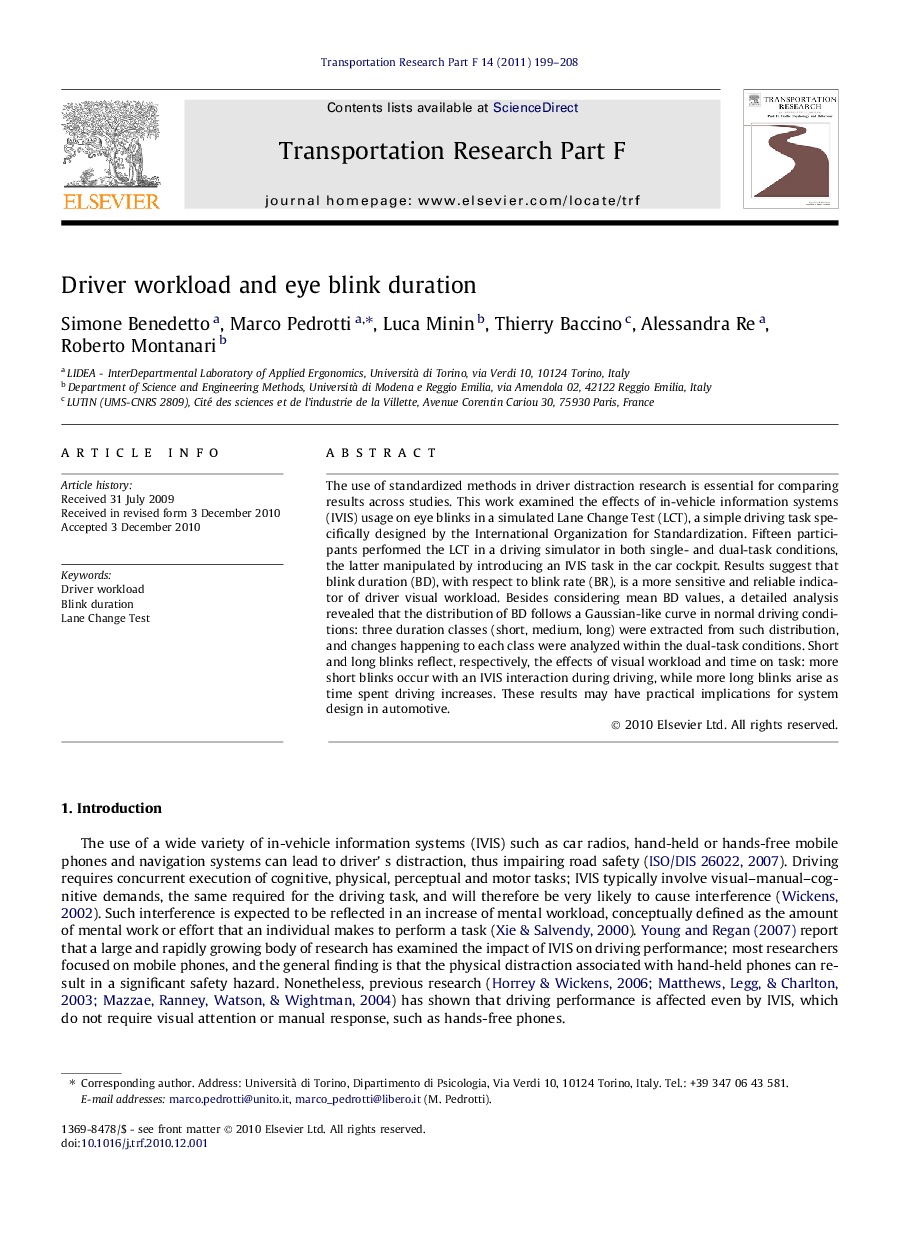| کد مقاله | کد نشریه | سال انتشار | مقاله انگلیسی | نسخه تمام متن |
|---|---|---|---|---|
| 897976 | 915214 | 2011 | 10 صفحه PDF | دانلود رایگان |

The use of standardized methods in driver distraction research is essential for comparing results across studies. This work examined the effects of in-vehicle information systems (IVIS) usage on eye blinks in a simulated Lane Change Test (LCT), a simple driving task specifically designed by the International Organization for Standardization. Fifteen participants performed the LCT in a driving simulator in both single- and dual-task conditions, the latter manipulated by introducing an IVIS task in the car cockpit. Results suggest that blink duration (BD), with respect to blink rate (BR), is a more sensitive and reliable indicator of driver visual workload. Besides considering mean BD values, a detailed analysis revealed that the distribution of BD follows a Gaussian-like curve in normal driving conditions: three duration classes (short, medium, long) were extracted from such distribution, and changes happening to each class were analyzed within the dual-task conditions. Short and long blinks reflect, respectively, the effects of visual workload and time on task: more short blinks occur with an IVIS interaction during driving, while more long blinks arise as time spent driving increases. These results may have practical implications for system design in automotive.
Research highlights
► In-vehicle information systems (IVIS) impair driver attention and road safety.
► Driver distraction research needs standardized methods like the Lane Change Test (LCT).
► Within the LCT eye movement metrics deserve further investigation.
► We studied eye blink duration during driver interaction with an IVIS.
► Eye blink duration indexes the effect of IVIS usage on driver visual workload.
Journal: Transportation Research Part F: Traffic Psychology and Behaviour - Volume 14, Issue 3, May 2011, Pages 199–208